The automotive industry in India is the fourth-largest by production in the world as per 2022 statistics. As of 2023, India is the 3rd largest automobile market in the world in terms of sales. In 2022, India became the fourth largest country in the world by the valuation of its automotive industry.
As of April 2022, India’s auto industry is worth more than US$100 billion and accounts for 8% of the country’s total exports and 7.1% of India’s GDP. According to the 2021 National Family Health Survey, barely 8% of Indian households own an automobile. According to government statistics, India has barely 22 automobiles per 1,000 people.
India’s major automobile manufacturing companies includes Maruti Suzuki, Hyundai Motor India, Tata Motors, Ashok Leyland, Mahindra & Mahindra, Force Motors, Tractors and Farm Equipment Limited, Eicher Motors, Royal Enfield, Sonalika Tractors, Hindustan Motors, Hradyesh, ICML, Kerala Automobiles Limited, Reva, Pravaig Dynamics, Premier, Tara International and Vehicle Factory Jabalpur.
In 1897, the first car ran on an Indian road. Through the 1930s, cars were imports only, and in small numbers.
An embryonic automotive industry emerged in India in the 1940s. Hindustan Motors was launched in 1942 building Morris products, long-time competitor Premier in 1944, building Chrysler Corporation products such as Dodge and Plymouth, and beginning in the 1960s, Fiat products. Mahindra & Mahindra was established by two brothers in 1945 and began assembly of Jeep CJ-3A utility vehicles. In the same years, J. R. D. Tata, the chairman of Tata Group founded TATA Engineering and Locomotive Company (now Tata Motors) in Jamshedpur. Following independence in 1947, the Government of India and the private sector launched efforts to create an automotive-component manufacturing industry to supply to the automobile industry. In 1953, an import substitution programme was launched, and the import of fully built-up cars began to be restricted.
1947–1970
The Hindustan Ambassador dominated India’s automotive market from the 1960s until the mid-1980s and was manufactured until 2014.
Fiat 1100D, built under license by Premier Automobiles later re-christened ‘Premier Padmini’ was the Ambassador’s only true competitor.
The 1952 Tariff Commission
In 1952, the Indian government appointed the first Tariff Commission, whose purpose was to come out with a feasibility plan for the indigenization of the Indian automobile industry. In 1953, the commission submitted its report, which recommended categorizing existing Indian car companies according to their manufacturing infrastructure, under a licensed capacity to manufacture a certain number of vehicles, with capacity increases allowable, as per demands, in the future. The Tariff Commission recommendations were implemented with new policies that would eventually exclude companies that only imported parts for assembly, as well as those with no Indian partner. In 1954, following the Tariff Commission implementation, General Motors, Ford, and Rootes Group, which had assembly-only plants in Mumbai, decided to move out of India.
The Tariff commission policies, including similar restrictions that applied to other industries, came to be known as the Licence Raj, which proved to be the greatest undoing of the Indian automotive industry, where bureaucratic red tape ended up causing demand to outstrip supply, with month-long waiting periods for cars, scooters, and motorcycles.
Passenger cars
Hindustan Motors was established in Kolkata in technical collaboration with Morris Motors to manufacture Morris Oxford models that would later become HM Ambassador.
Addisons, Madras – An Amalgamations Group company, was the agent for Nuffield’s Morris, Wolseley, and Riley cars, and Chrysler’s Plymouth, Dodge, and De Soto cars and trucks. The first Morris Minor assembled in India and the first car assembled in Madras was driven out from Addison’s twin-plants on Smith Road by Anantharamakrishnan on 15 November 1950.
Premier Automobiles, Mumbai – entered into technical collaboration with Chrysler to manufacture Dodge, Plymouth and Desoto models and with Fiat to manufacture the 1100D models which would later become Premier Padmini range.
Standard Motor Products of India, Madras – entered into technical collaboration from Standard-Triumph to manufacture Standard Vanguard, Standard 8, 10 and later Standard Herald.
Utility and light commercial vehicles
Vehicle Factory Jabalpur – started manufacturing Jonga Light Utility Vehicles and Vahan 1 Ton (Nissan 4W73 Carriers) in India, under license from Nissan of Japan. They were the main troop carriers of the Indian Armed Forces and much more powerful than any other vehicle of their class.Also, Nissan Power Wagon was added to their line.
Mahindra & Mahindra plant established in Mumbai – technical collaboration with Willys to manufacture CJ Series Jeep.
Bajaj Tempo, Pune, now Force Motors – entered into technical collaboration with Tempo to manufacture Tempo Hanseat, a three-wheeler and Tempo Viking and Hanomag, later known as Tempo Matador in India.
Standard Motor Products of India – entered into technical collaboration from Standard and had licence to manufacture the Standard Atlas passenger van with panel van and one-tonne pickup variants.
Medium and heavy commercial vehicles
Tata Motors established a new plant in Pune with technical collaboration with Mercedes Benz to manufacture medium to heavy commercial vehicles both Bus and Trucks.
Vehicle Factory Jabalpur started manufacturing Shaktiman trucks with technical assistance from MAN SE of Germany. The trucks were the main logistics vehicle of the Indian Army with several specialist variants. VFJ still is the sole supplier of B vehicles to the Indian Armed Forces.
Heavy Vehicles Factory was established in 1965 in Avadi near Chennai to produce tanks in India. Since its inception, HVF has produced all the tanks of India, including Vijayanta, Arjun, Ajeya, Bhishma and their variants for the Indian Army. HVF is the only tank manufacturing facility of India.
Ashok Leyland was founded in Chennai with Leyland Motors to manufacture medium to heavy commercial vehicles both Bus and Trucks. Ashok Motors also discontinued its Austin venture formed in 1948 to sell Austin A40 and retooled the factory to make trucks and buses.
Hindustan Motors – had technical collaboration with General Motors to manufacture the Bedford range of medium lorry and bus chassis.
Premier Automobiles – entered into technical collaboration with Chrysler to manufacture the Dodge, Fargo range of medium lorry, panel vans, mini-bus, and bus chassis.
Simpsons & Co, Madras – part of Amalgamations Group (TAFE Tractors) – had technical collaboration with Ford to manufacture medium lorry and bus chassis, but did not utilise that option until the 1980s.+
The number of cars, jeeps and trucks produced by the different auto mobile manufacturers during 1959 upto the 30th September
Cars= 8o80
Jeeps=3942
Trucks (including buses)=13672
Scooters, mopeds and motorcycles
Many of the two-wheelers manufacturers were granted licenses in the early 1960s, well after the tariff commission was enabled.
Royal Enfield (India), Madras – had technical collaboration with Royal Enfield, UK to manufacture the Enfield Bullet range of motorcycles.
Bajaj Auto, Poona – had technical collaboration with Piaggio, Italy to manufacture their best-selling Vespa range of scooters and three-wheelers with commercial options as well.
TVS Motors, Madurai/Chennai – started individually and later had technical collaboration with Suzuki Motors, before finally buying them out of the JV.
Automobile Products of India, Bombay (Better known for API Lambretta) – had a technical collaboration with Innocenti of Milan, Italy to manufacture their Lambretta range of mopeds, scooters and three-wheelers. This company was actually the Rootes Group car plant that was bought over by M. A. Chidambaram family.
Mopeds India Limited, Tirupathi – had technical collaboration with Motobécane, France to manufacture their best selling Mobylette mopeds.
Escorts Group, New Delhi – had technical collaboration with CEKOP of Poland to manufacture the Rajdoot 175 motorcycle whose origin was DKW RT 125.
Ideal Jawa, Mysore – entered into technical collaboration with CZ – Jawa of Czechoslovakia for its Jawa and Yezdi range of motorcycles.
However, growth was relatively slow in the 1950s and 1960s, due to nationalisation and the license raj, which hampered the growth of the Indian private sector.
1970 to 1983
The beginning of the 1970s didn’t see growth potential; and most of the collaboration license agreements came to an end, but with the option to continue manufacturing with renewed branding. Cars were still meant for the elite and Jeeps, now owned by American Motors Corporation, were largely used by government organizations and in some rural regions. By the end of the decade, some developments were made in commercial vehicle segments to facilitate the movement of goods. The two-wheeler segment remained unchanged except for increased sales to the middle class in urban areas. There was an emphasis on having more farm tractors, as India was embarking on a new Green Revolution; and Russian and Eastern bloc imports were brought in to meet the demand.
But after 1970, with restrictions on the import of vehicles set, the automotive industry started to grow; but the growth was mainly driven by tractors, commercial vehicles, and scooters. Cars still remained a major luxury item. In the 1970s, price controls were finally lifted, inserting a competitive element into the automobile market. However, by the 1980s, the automobile market was still dominated by Hindustan and Premier, who sold superannuated products in fairly limited numbers. The rate of car ownership in 1981 was about one in every thousand citizens – understandable when the annual road tax alone cost about half the average income of an Indian at the time.
During the eighties, a few competitors began to arrive on the scene. Of the 30,487 cars built in India in 1980, all but six came from the two main players Hindustan and Premier: Standard had led a shadow existence in the latter half of the 1970s, producing only a handful of cars to keep their license active. A new contender was tiny Sipani, which had tried building locally developed three-wheeled vehicles since 1975 but introduced the Reliant Kitten-based Dolphin in 1982. Nonetheless, all eyes were on Maruti, which caused a major upheaval to the Indian automobile industry.
The OPEC oil crisis saw increase need to installing or redesign some vehicle to fit diesel engines on medium commercial vehicle. Until the early 1970s Mahindra Jeeps were on Petrol and Premier commercial vehicles had Petrol model options. The Defence sector too had most trucks on Petrol engines.
1984 to 1992
Chemical Biological Radiological and Nuclear Reconnaissance Vehicle (CBRN-RV) manufactured by the AVANI
From the end of the 1970s to the beginning of the 1980s India saw no new models, the country continuing to depend on two decades-old designs. The Sipani Dolphin, which arrived in 1982, was not a serious contender, with its plastic body and without rear doors – essential to Indian car buyers. This situation forced the government to encourage and let more manufacturers into fray.
In 1984 AVANI was established in Medak near Hyderabad. It started manufacturing Infantry Combat Vehicles christened as Sarath, the backbone of India’s mechanised infantry. AVANI is still the only manufacturing facility of ICVs in India. To manufacture the high-power engines used in ICVs and main battle tanks, the Engine Factory was set up in 1987 in Avadi, near Chennai. In 1986, to promote the auto industry, the government established the Delhi Auto Expo. The 1986 Expo was a showcase for how the Indian automotive industry was absorbing new technologies, promoting indigenous research and development, and adapting these technologies for the rugged conditions of India.
Post-1992 liberalisation
Tata Indica, launched in 1998
Eventually multinational automakers such as Suzuki and Toyota of Japan and Hyundai of South Korea were allowed to invest in the Indian market, furthering the establishment of an automotive industry in India. Maruti Suzuki was the first and the most successful of these new entries, in part the result of government policies to promote the automotive industry beginning in the 1980s. As India began to liberalise its automobile market in 1991, a number of foreign firms also initiated joint ventures with existing Indian companies. The variety of options available to the consumer began to multiply in the nineties, whereas before there had usually only been one option in each price class. By 2000, there were 12 large automotive companies in the Indian market, most of them offshoots of global companies.
Slow export growth
Exports were slow to grow. Sales of small numbers of vehicles to tertiary markets and neighbouring countries began early, and in 1987 Maruti Suzuki shipped 480 cars to Europe (Hungary). After some growth in the mid-nineties, exports once again began to drop as the outmoded platforms provided to Indian manufacturers by multinationals were not competitive. This was not to last, and today India manufactures low-priced cars for markets across the globe. As of 18 March 2013, global brands such as Proton Holdings, PSA Group, Kia, Mazda, Chrysler, Dodge and Geely Holding Group were shelving plans for India due to the competitiveness of the market, as well as the global economic crisis.
Emission norms
In 2000, in line with international standards to reduce vehicular pollution, the central government unveiled standards titled “India 2000”, with later, upgraded guidelines to be known as Bharat Stage emission standards. These standards are quite similar to the stringent European emission standards and have been implemented in a phased manner.
Bharat Stage IV (BS-IV) was first implemented in 13 cities — Agra, Ahmedabad, Bengaluru, Chennai, Delhi (NCR), Kanpur, Kolkata, Lucknow, Hyderabad, Mumbai, Pune, Surat, Solapur — in April 2010, and then in the rest of the nation in April 2017.
In 2019, in line with international standards to reduce vehicular pollution, the central government of India announced the introduction of BS-VI norms to control air pollution, taking effect from 1 April 2020.
Local manufacture encouraged
Auto Expo 2014, Noida
India levies an import tax of 125% on foreign imported cars, while the import tax on components such as gearboxes, airbags, drive axles is 10%. The taxes are intended to encourage cars to be assembled in India rather than be imported as completely built units.
Auto Expo 2014, Noida
Sub-4-metre rule
In 2006, the government of India imposed a new tax structure, which massively impacted the segment. It enables vehicles shorter than 4.0 metres (157.5 in) to qualify for a significantly lower excise duty, which is 8 percent as opposed to 20 percent for longer vehicles. Tata Motors was the first to exploit the new tax structure, which redesigned the rear portion of the Indigo sedan, dropping its length to 3,988 mm (157.0 in) and renamed it as the Indigo CS. The model became significantly cheaper, becoming one of the largest selling three-box cars in the country. Other manufacturers quickly adapted, which led to the release of the shorter Suzuki Swift Dzire, the new Honda Brio Amaze, and others.
Manufacturing facilities
Isuzu’s manufacturing plant at Sri City, Andhra Pradesh
The majority of India’s car manufacturing industry is evenly divided into three “clusters”. Around Chennai is the largest, with a 35% revenue share, accounting for 60% of the country’s automotive exports, and home of the operations of Heavy Vehicles Factory, Engine Factory Avadi, Ford, Hyundai, Renault, Mitsubishi, Nissan, BMW, Hindustan Motors, Daimler, Caparo, Mini, Citroën and Datsun.
Near Mumbai, Maharashtra, along the Chakan corridor near Pune, is the western cluster, with a 33% share of the market. Audi, Volkswagen, and Škoda are located in Aurangabad. Mahindra and Mahindra has an SUV and engine assembly plant at Nashik. General Motors, Tata Motors, Mercedes Benz, Land Rover, Jaguar, Fiat, and Force Motors have assembly plants in the area.
The northern cluster is around the National Capital Region, and contributes 30%. Gurgaon, Manesar and Kharkhoda in Haryana, are where the country’s largest car manufacturer, Maruti Suzuki, is based.
An emerging cluster is the state of Gujarat, with a manufacturing facility of MG Motors in Halol, Atul Auto in Rajkot, Ford, Oculus Auto in Sabarkantha, Maruti Suzuki, and Peugeot-Citroën plants are also planned for Gujarat.
Uttarakhand with Tata Motors, Telangana with Hyundai, Ordnance Factory Medak, Hyderabad Allwyn and Mahindra & Mahindra, Noida with Honda, and Bengaluru – Karnataka region with Toyota, Volvo and Scania, Andhra with Isuzu and Kia and Kolkata – Jamshedpur belt also known as East India belt with companies such as Hindustan Motors, Heavy Engineering Corporation, Tata Hitachi Construction Machinery, TIL Tractos, Tata Daewoo and Tata Motors are other automotive manufacturing regions around the country.
Andhra Pradesh
Commercial and passenger vehicles
Isuzu Motors India – Sri City
Kia India – Penukonda (Anantapur)
Ashok Leyland – Vijayawada
Two wheelers
Hero MotoCorp – Satyavedu
Off-highway vehicles
Kobelco Cranes – Sri City








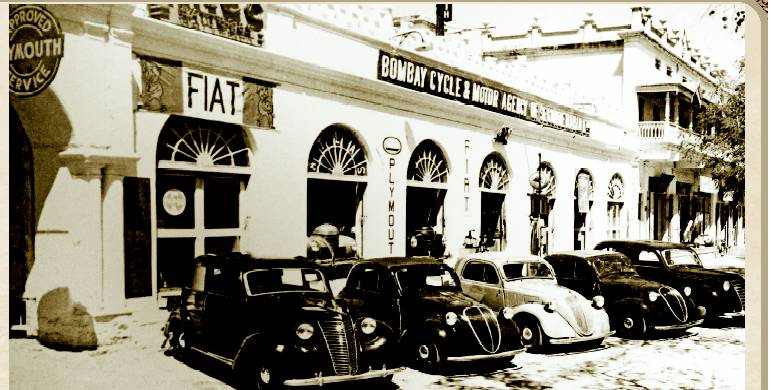



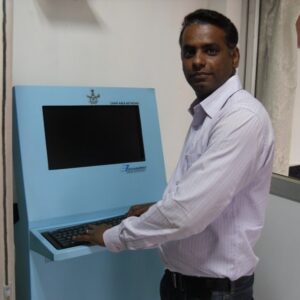
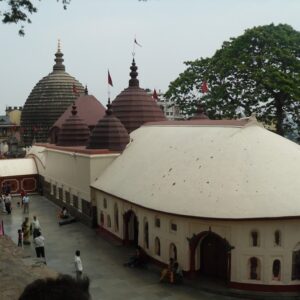

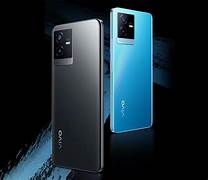


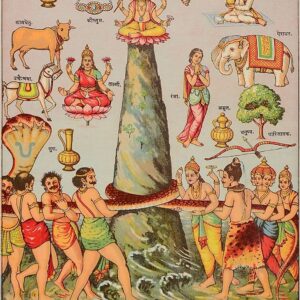


Reviews
There are no reviews yet